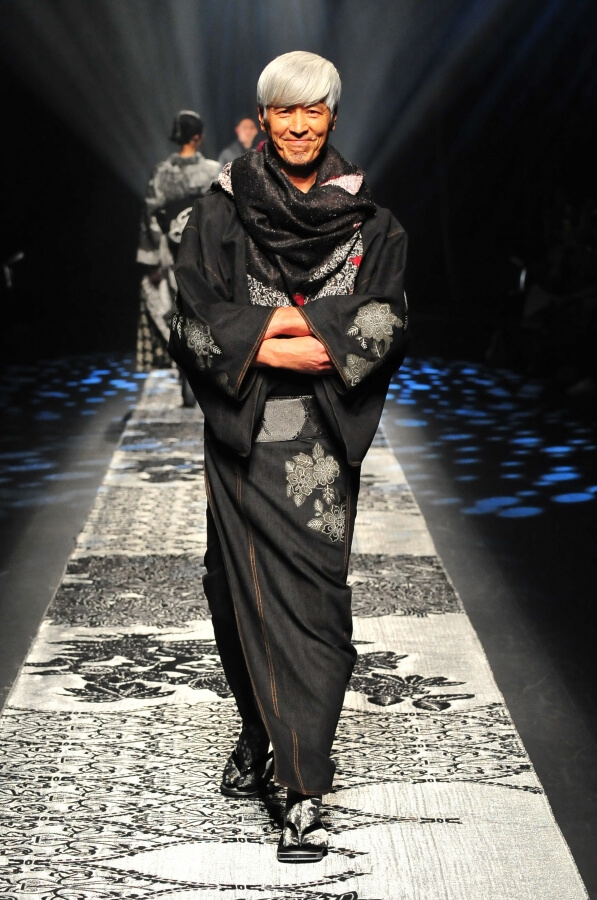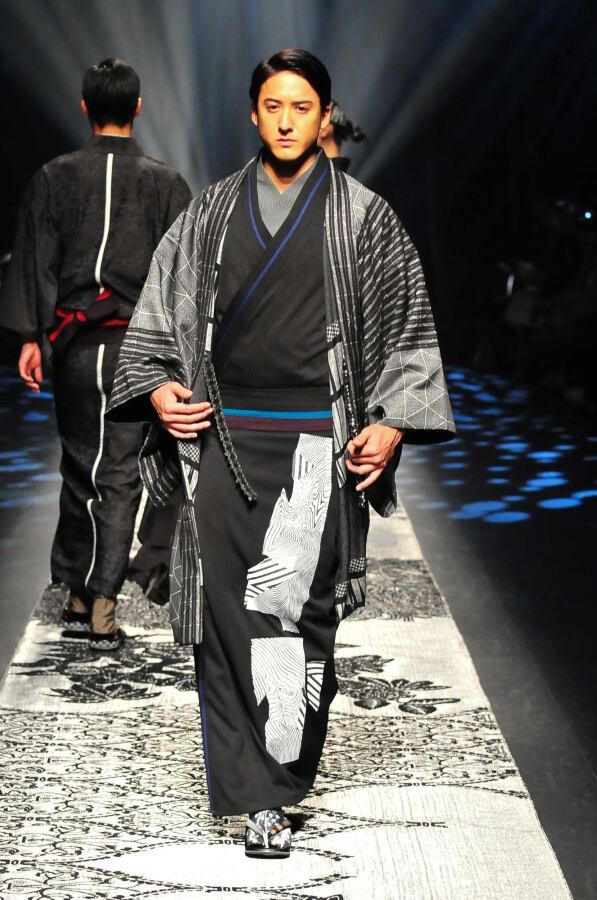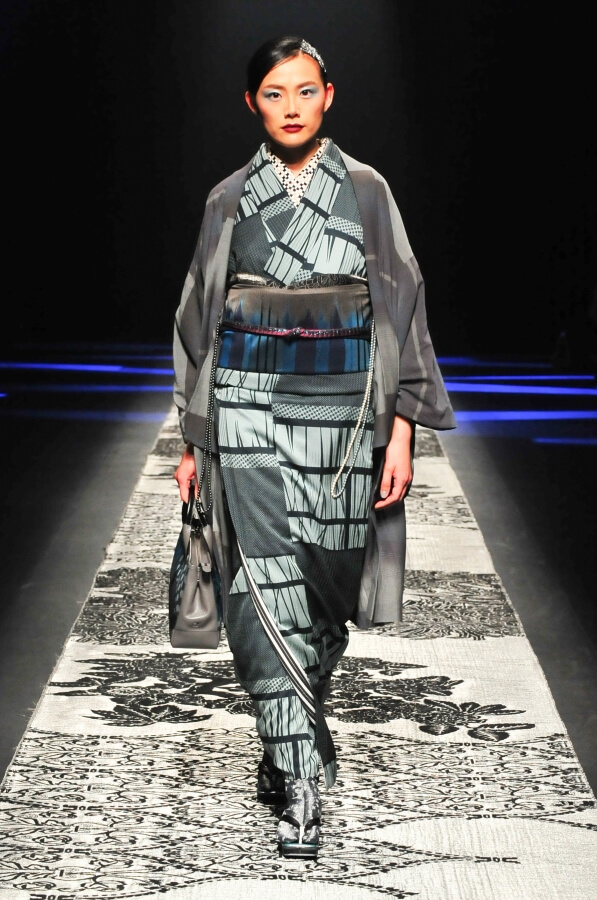Jotaro Saito and the Perpetual Reinvention of the Kimono
The designer, who grew up in Kyoto, has no intention of leaving the traditional garment to museums and adds a hint of modernity to his pieces.

© Jotaro Saito
Jotaro Saito was born in Kyoto, the city of geisha, and has retained a fascination for the elegance of Japanese traditional dress ever since. Having grown up surrounded by creators, he learnt the technique of dyeing from his grandfather and the art of design from his father. Equipped with this knowledge passed down through the family and already driven by a strong vision, Jotaro Saito opened his own workshop in 1996 and became, at just 27 years of age, one of the youngest kimono designers in Japan (the majority only establish themselves in their 40s or 50s).
Freeing the kimono from the shackles of the past
Jotaro Saito’s kimono are both classic and contemporary. He takes pleasure in the forms of poetic licence that shine through in his patterns. His cherry blossom might be blue, or his printing marked with a slight twist… Above all, Jotaro Saito aims to free the kimono from the shackles of the past. However, he never forgets that adopting the western style represents just a tiny fragment of the history of Japan and its traditional dress.
The designer, who recently opened a boutique in the luxury retail complex Ginza Six, raised the following question in an interview in The Japan Times: ‘The popularity of traditional culture places us at a crossroads: does it lead us directly to a museum, or will it instead trigger a revival?’ As an engaged artist, Jotaro Saito seems to have chosen the second option.
More information on Jotaro Saito’s latest collections can be found on the designer’s website and on his Instagram account.

© Jotaro Saito

© Jotaro Saito
TRENDING
-
The Tattoos that Marked the Criminals of the Edo Period
Traditional tattoos were strong signifiers; murderers had head tattoos, while theft might result in an arm tattoo.

-
The Story of Sada Yacco, the Geisha who Bewitched Europe
Described by Dazed magazine as the first beauty influencer, she has been restored to her former glory since 2019.

-
Chiharu Shiota, Red Threads of the Soul
Last year, more than 660,000 people visited the retrospective 'Chiharu Shiota: The Soul Trembles' exhibit at the Mori Art Museum.

-
Japanese Left-field Pop From The CD Age, 1989-1996
‘Heisei No Oto’, a compilation of hidden gems in the unspoken depths of Japanese pop, reveal blissful moment of technological possibility.

-
‘Shojo Tsubaki’, A Freakshow
Underground manga artist Suehiro Maruo’s infamous masterpiece canonised a historical fascination towards the erotic-grotesque genre.





